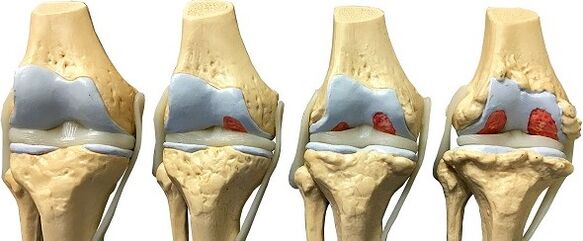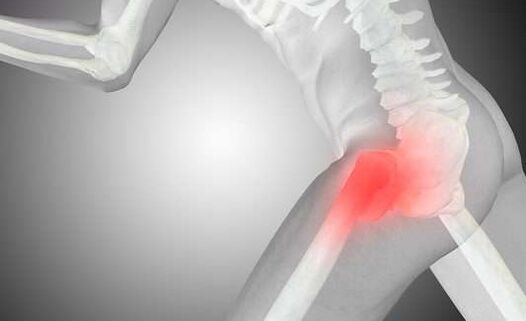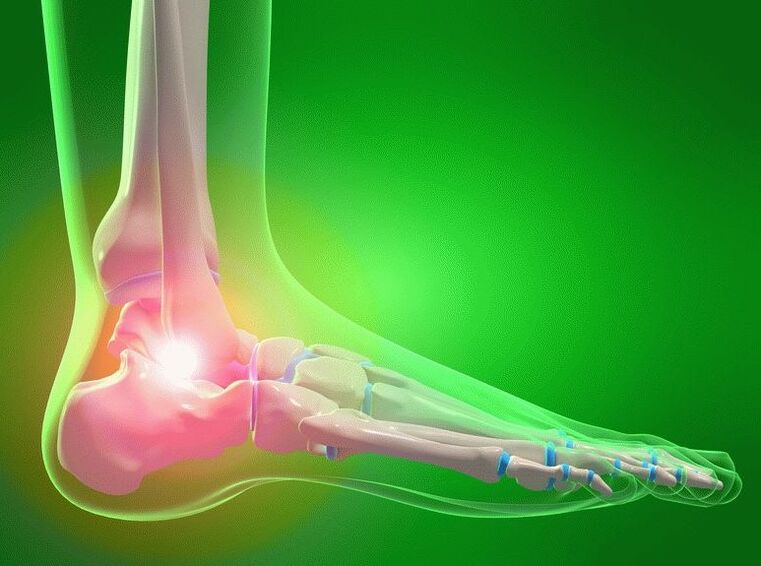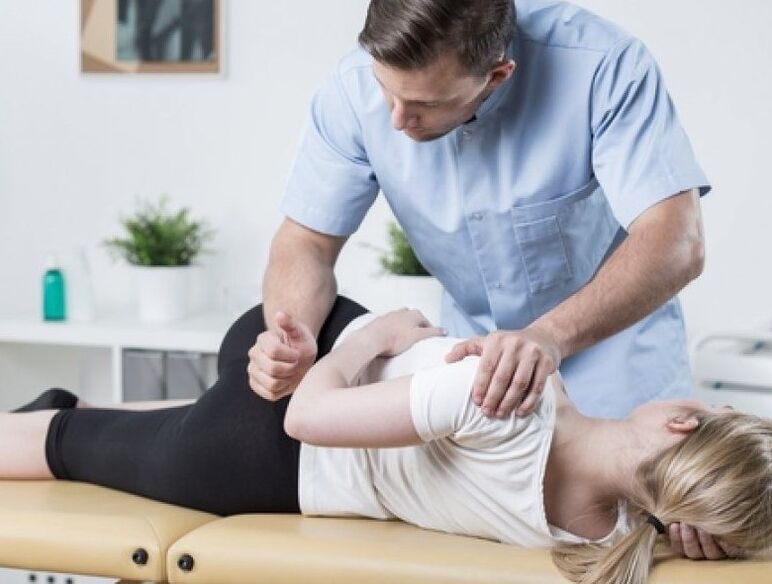The life of a person with arthritis is divided into "money" and "after". Before the illness, there were great and small joy, sometimes insignificant problems. After that, there remained only a daily struggle and the quiet despair that normal life would never return. But you can solve the problem forever!

What is arthrosis
It is a disease of the joints, when the articular cartilage is destroyed over time, the articular edges of the bones are modified, the degenerate natural tissue and the inflammation is actively blooming.
Causes and development
Arthrosis can develop due to excess loads or common damage. In any case, the process is associated with a decrease in the amount of proteinoglycans (specific complex proteins). Due to a decrease in the number of proteinoglycans, the joint loses water, as it is these molecules that hold it. As a result, the cartilage "dries", loses elasticity and elasticity, becomes harsh and dry. Because of this, abnormal friction occurs as a result of the result. Due to friction, the knot is "wiped", the cartilage becomes thinner, it becomes thinner. Due to continuous microdamines, growths are formed in joint osteophytes. The last stage is the complete disappearance of the cartilage.
Found incorrectly, people get osteophytes for "salt", which should "scatter". But they are not salt deposits and there is nothing to distribute to the joints.
Risk factors for arthritis determine its causes. Please note that if there is a factor (for example, age 50), arthritis may not happen, but the chances of its appearance increase in the presence of 2 or more reasons, for example, an injury at the age of 50. All factors can be divided into non -general and genetic, external and internal.
Internal Factors:
Lack of minerals and vitamins. Everything is clear here. If there is no obtaining the necessary substances, then collagen and other substances simply have nothing to be synthesized. Pathology can develop against the background of abnormalities in the assimilation of substances.

External Factors:
The main symptoms
The diagnosis of arthrosis is quite simple, even an unprepared person can do so, it is enough to understand the types of pain in the joints.
Types of pain in the joints:
Another characteristic symptom is a dry crisis in the fusion when moving. Normally, the joints also accumulate, but the sound from a healthy fusion is gloomy and sharp, the joints do not harm. With arthritis, the cramping is dry, at first it is heard poorly, but accompanies the movement constantly. At the same time, a person experiences severe pain.
With the development of the disease, other characteristic symptoms appear: low mobility, joint deformity. The X -Ray photo shows a decrease in the joint gap, bone growth in the bone heads, their deformation.
Arthrosis often occurs in the knee and hip joints, as they are those who experience increased loads. Less often, it occurs in the shoulder and elbow joints, on the fingers or feet. There is a variety of generalized arthrosis of the disease, in which all joints are affected in the body once.
The stages of the disease

With arthrosis, articular cartilage, bone and tissue adjacent to them are damaged. The stages of arthrosis are distinguished depending on the degree of damage to the joint.
First stage
At this stage, degenerative processes only affect collagen fibers and proteoglycan molecules in the cartilage. Due to the change in the composition of the cartilage or synovial fluid, pathological friction occurs, which leads to painful sensations. Pain occurs after strong physical exercise, at rest it disappears. Common movements are not yet difficult, changes are not about muscle fibers, shared bag and blood vessels. At this stage, the changes are not visible on X -Ray or they are irrelevant.
Stage 2
Due to abnormal friction, the cartilage loses the properties of elasticity and strength, gradually thinner and no longer protects the bone heads. As a result, they are flattened, due to which the area of their contact increases. At the edges of the common platform, growing - osteophytes that are clearly visible in an X -Ray appearance are formed.
At this stage, the pain follows the patient not only with loads, but already with a slight movement. Peace does not provide complete relief, though it can reduce pain. Partially loses mobility, the patient himself also tries not to charge the affected limb.
Due to lack of mobility, blood supply to the joints worsens. As a result, the composition of the synovial fluid changes, becomes viscous, loses lubricating properties, which accelerates the course of the disease. X-ray indicates a decrease in the lumen of the common gap by 50-70%, the common deformation becomes apparent.
Stage 3
At this stage, the cartilage completely or partially disappears. Mobility of the joint disappears, the patient experiences severe pain not only when moving but also at rest. The joint gap and synovial fluid disappear, and the wrinkles of the common bag and atrophy. At this stage, only surgical treatment is possible with replacing the joint with an artificial prosthesis. If this is not done, then anchilosis will occur with the inability to move.
Treatment methods
Even with 100% dedication of the doctor and patient, the joint is completely restored to only 1 stage of arthrosis. In 2 stages, bone deformity is observed, so it will not work to turn the node into joint. But you can delay the operation for a long time, or even avoid it completely. Phase 3 of arthrosis is treated exclusively surgical.

In the treatment of 1 and 2 stages of arthrosis, many methods are used. First of all, it is drug treatment. Different physiotherapy, biological methods of treatment, are also used massage. Overweight, food normalization is required.
Symptomatic therapy
To eliminate the pain, non -steroidal anti -inflammatory drugs are used. All funds have many contraindications, in addition, they are not recommended for prolonged use, as they exacerbate the synthesis of proteinoglycans in the joint.
To relieve pain, it is best to use selective anti -inflammatory medicines. They do not cause complications, have few contraindications and can be vaguely accepted for a long time. To improve blood circulation, you can use vasodilating medicines or local irritating ointments.
Specific therapy
It consists of taking the chondroprotector (glucosamine and chondroitin sulfate) - cartilage restoration medicines. Glucosamine stimulates chondrocyte activities, in addition, it is a raw material for the creation of proteoglycan molecules. The chondroitin sulfate increases the proteinoglycan's ability to grab and hold water. In addition, it stimulates the formation of collagen fibers and blocks the enzymes that distribute them.
Intra -articular injections of hyaluronic acid are also used. It is a raw material for collagen fibers and an integral part of synovial fluid. The treatment method is common and has proven its effectiveness. To get the effect of specific therapy, it takes a long time 1-1. 5 years, until the cartilage is fully restored.
Surgical surgery
The latest and most radical method of treatment of arthrosis. During surgery, the affected joint is disconnected, the joint head and the coupling bed are removed. Instead, an artificial joint is placed with a titanium head and a high -strength polyethylene lodge. The whole structure is fixed to the bone with the help of pins.
The surgery to replace the hip or knee joint is complex and dangerous. It often leads to complications (pulmonary thromboembolism, infectious disease). Even with a successful operation, the "Shatter" prosthesis over time and requires replacement. This occurs at a maximum of 10-15 years, and the minimum period is 1-3 years.

Other procedures
Many procedures are aimed at eliminating harmful friction in the joint, improving blood supply. Treatment methods, many of all should be used comprehensively or alternately. We will analyze only some of the most effective methods of treatment:
Here is an example of the exercises that the specialized doctor of arthrologists speaks with explanations for each exercise.
Arthritis
For a long time it was believed that irregular nutrition leads to arthritis and can be cured with a diet. Today it became clear that food was not directly related to arthrosis.
Of course, excess weight is one of the factors that accelerate the flow of arthritis, so diets are useful, but only for a certain circle of people. Normalization of food for arthritis should be understood to be taken from excess weight.
Lowering weight is especially important for people suffering from gonartrosis because the main body weight is on their knees.

When you throw weight, you need to understand and use some rules that will simplify the task and give a guarantee of the result:
Arthrosis is a terrible disease, but with a systematic and timely approach to treatment, it is withdrawn. To defeat it, you need to know its essence, development mechanisms, risk factors and causes of development. If you use all the recommended methods of therapy, then the healing of arthrosis will be quite simple.























